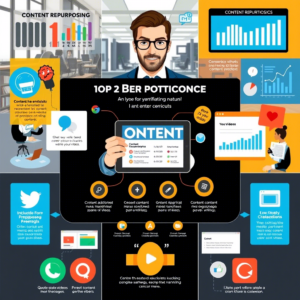Imagine visiting a website and being instantly drawn into a fun quiz or engaging poll. Instead of passively scrolling, you find yourself interacting with the content, answering questions, and seeing instant feedback. This is the power of interactive content. In today’s digital landscape, user engagement is critical for online success, and interactive content is one of the most effective tools to achieve this.
This article explores how quizzes, polls, and other interactive elements can drive user engagement, increase website traffic, and improve the overall user experience. Whether you’re a marketer, blogger, or business owner, leveraging interactive content can transform the way you connect with your audience.
1. Why Interactive Content Works So Well
Interactive content captivates audiences because it creates a two-way interaction, making users active participants rather than passive consumers. This engagement leads to higher retention rates, increased time spent on a website, and greater brand recall.
A study by the Content Marketing Institute found that 81% of marketers believe interactive content is more effective at grabbing attention than static content. Unlike traditional blog posts or static visuals, interactive elements encourage users to take action—whether that’s clicking, swiping, or submitting answers—which fosters deeper engagement.
Additionally, interactive content provides instant feedback. Whether it’s the results of a personality quiz or the outcome of a poll, users enjoy immediate gratification, which keeps them engaged and encourages further exploration.
2. Boosting Website Traffic with Quizzes and Polls
One of the main advantages of interactive content is its potential to drive organic traffic. Quizzes, polls, and assessments often go viral because people love sharing their results with friends and followers.
For instance, Buzzfeed’s quiz strategy has been wildly successful, with some quizzes garnering millions of shares. When people take a quiz and find the results amusing or insightful, they are more likely to share it on social media, bringing in new visitors to the website.
Additionally, search engines favor engaging content. When users spend more time on your page, it signals to Google that your content is valuable, which can improve search rankings. As a result, incorporating interactive elements into your website can enhance visibility and attract a steady flow of new visitors.
3. Improving Lead Generation Through Interactive Content
Interactive content is not only about engagement—it’s also a powerful tool for lead generation. By incorporating quizzes, calculators, or assessments into your marketing strategy, you can gather valuable user data while providing a fun experience.
For example, a fitness brand might create a “What’s Your Ideal Workout Routine?” quiz. At the end of the quiz, users can enter their email to receive personalized workout plans based on their answers. This strategy not only engages visitors but also builds a highly targeted email list.
Moreover, interactive content allows businesses to collect insights on user preferences and behaviors. This data can be used to create more personalized marketing campaigns, improving customer experience and conversion rates.
4. Enhancing Brand Authority and Trust
Interactive content positions brands as industry leaders by offering value in an engaging way. When businesses provide personalized experiences, educational quizzes, or insightful surveys, they establish credibility and build trust with their audience.
For instance, an e-learning platform might offer a knowledge assessment quiz that helps users determine their skill level before enrolling in a course. This not only adds value but also reassures potential customers that they are making an informed decision.
Interactive tools such as polls and surveys also allow brands to involve their audience in decision-making processes. By gathering opinions and preferences directly from users, businesses can tailor their offerings to meet customer expectations more effectively.
5. Encouraging Social Sharing and Community Engagement
People love sharing content that reflects their personality, beliefs, or opinions. Quizzes and polls provide a great opportunity for social sharing, as users often want to compare their results with friends.
Take personality quizzes, for example. Many people share their quiz results on social media platforms like Facebook and Twitter, leading to a chain reaction of engagement. When structured correctly, interactive content can create a sense of community by sparking conversations and discussions.
Additionally, brands can use interactive polls to engage their audience directly. Asking users to vote on upcoming product launches, new features, or trending topics makes them feel valued and increases brand loyalty.
Conclusion
Interactive content is revolutionizing the way brands engage with audiences. By incorporating quizzes, polls, assessments, and other engaging elements into your content strategy, you can drive higher user engagement, boost website traffic, generate leads, and establish brand credibility.
As digital spaces become more competitive, simply producing static content is no longer enough. Businesses and content creators who leverage interactive content stand out in crowded markets, offering their audiences an enjoyable, immersive experience.
So, how can you start using interactive content today? Try adding a simple quiz or poll to your next blog post or website page and see the difference in engagement for yourself! What type of interactive content do you enjoy most? Let us know in the comments!




